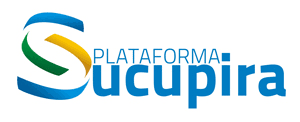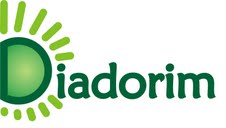Model Predictive Control Applied to a Quadrotor UAV
DOI:
https://doi.org/10.26512/ripe.v2i20.15012Abstract
This paper describes and analyzes the performance of two different formulations of model predictive control (MPC) applied to a quadrotor unmanned aerial vehicle (UAV), one that explicitly handles constraints and another that doesn’t. The objective of the MPC strategy is to compute an optimal sequence of actions within its prediction horizon to track desired states. The optimization strategies adopted in this work are based on an approximated dynamical model for prediction while imposing a quadratic cost function. One prominent vantage of MPC is its ability to handle constraints inherent to the process, based either on actuators’ limitations or security concerns. Through simulations, the impacts of imposing a convex set of constraints is analyzed, regarding the performance and computational effort involved in solving a trajectory tracking problem.
Keywords: Optimal control, Predictive Control, Quadrotors, UAVs
References
Alamir, M. (2013), A Pragmatic Story of Model Predictive Control: Self-Contained Algorithms and Case-Studies, 1st edn, CreateSpace Independent Publishing Platform, USA.
Burri, M., Nikolic, J., Hurzeler, C., Caprari, G. & Siegwart, R. (2012), Aerial service robots for visual inspection of thermal power plant boiler systems, in ‘Applied Robotics for the Power Industry (CARPI), 2012 2nd International Conference on’, IEEE, pp. 70”“75.
Faessler, M., Fontana, F., Forster, C., Mueggler, E., Pizzoli, M. & Scaramuzza, D. (2015), ‘Autonomous, vision-based flight and live dense 3d mapping with a quadrotor micro aerial vehicle’, Journal of Field Robotics .
Ferreau, H., Kirches, C., Potschka, A., Bock, H. & Diehl, M. (2014), ‘qpOASES: A parametric active-set algorithm for quadratic programming’, Mathematical Programming Computation 6(4), 327”“363.
Ferreau, H., Potschka, A. & Kirches, C. (2007”“2015), ‘qpOASES webpage’, http://www.qpOASES.org/.
Holz, D. & Behnke, S. (2016), Mapping with micro aerial vehicles by registration of sparse 3D laser scans, in ‘Intelligent Autonomous Systems 13’, Springer, pp. 1583”“1599.
Izadi, H. A., Zhang, Y. & Gordon, B. W. (2011), Fault tolerant model predictive control of quad-rotor helicopters with actuator fault estimation, in ‘Proc. 2011 Proceedings of the 18th IFAC World Congress’, pp. 6343”“6348.
Kim, J., Kang, M.-S. & Park, S. (2010), ‘Accurate modeling and robust hovering control for a quad”“rotor VTOL aircraft’, Journal of Intelligent and Robotic Systems 57(1-4), 9”“26.
Lopes, R. V., Santana, P., Borges, G. & Ishihara, J. (2011), Model predictive control applied to tracking and attitude stabilization of a vtol quadrotor aircraft, in ‘21st International Congress of Mechanical Engineering’.
Luukkonen, T. (2011), ‘Modelling and control of quadcopter’, Independent research project in applied mathematics, Espoo .
Mattingley, J. & Boyd, S. (2012), ‘Cvxgen: A code generator for embedded convex optimization’, Optimization and Engineering 13(1), 1”“27.
Powers, C., Mellinger, D. & Kumar, V. (2015), Quadrotor kinematics and dynamics, in ‘Handbook of Unmanned Aerial Vehicles’, Springer, pp. 307”“328.
Richalet, J., Rault, A., Testud, J. & Papon, J. (1978), ‘Model predictive heuristic control: Applications to industrial processes’, Automatica 14(5), 413”“428.
Santana, P. & Borges, G. (2009), ‘Modelagem e controle de quadrirrotores’, IX Simpósio Brasileiro de Automaçao Inteligente (SBAI 2009) 9, 1”“6.
Scaramuzza, D., Achtelik, M. C., Doitsidis, L., Friedrich, F., Kosmatopoulos, E., Martinelli, A., Achtelik, M. W., Chli, M., Chatzichristofis, S. A., Kneip, L. et al. (2014), ‘Vision-controlled micro flying robots: from system design to autonomous navigation and mapping in GPSdenied environments’, Robotics & Automation Magazine, IEEE 21(3), 26”“40.
Wang, Y. & Boyd, S. (2010), ‘Fast model predictive control using online optimization’, Control Systems Technology, IEEE Transactions on 18(2), 267”“278.
Zulu, A., John, S. et al. (2014), ‘A review of control algorithms for autonomous quadrotors’, Open Journal of Applied Sciences 4(14), 547. CILAMCE
Downloads
Published
Issue
Section
License
Given the public access policy of the journal, the use of the published texts is free, with the obligation of recognizing the original authorship and the first publication in this journal. The authors of the published contributions are entirely and exclusively responsible for their contents.
1. The authors authorize the publication of the article in this journal.
2. The authors guarantee that the contribution is original, and take full responsibility for its content in case of impugnation by third parties.
3. The authors guarantee that the contribution is not under evaluation in another journal.
4. The authors keep the copyright and convey to the journal the right of first publication, the work being licensed under a Creative Commons Attribution License-BY.
5. The authors are allowed and stimulated to publicize and distribute their work on-line after the publication in the journal.
6. The authors of the approved works authorize the journal to distribute their content, after publication, for reproduction in content indexes, virtual libraries and similars.
7. The editors reserve the right to make adjustments to the text and to adequate the article to the editorial rules of the journal.









